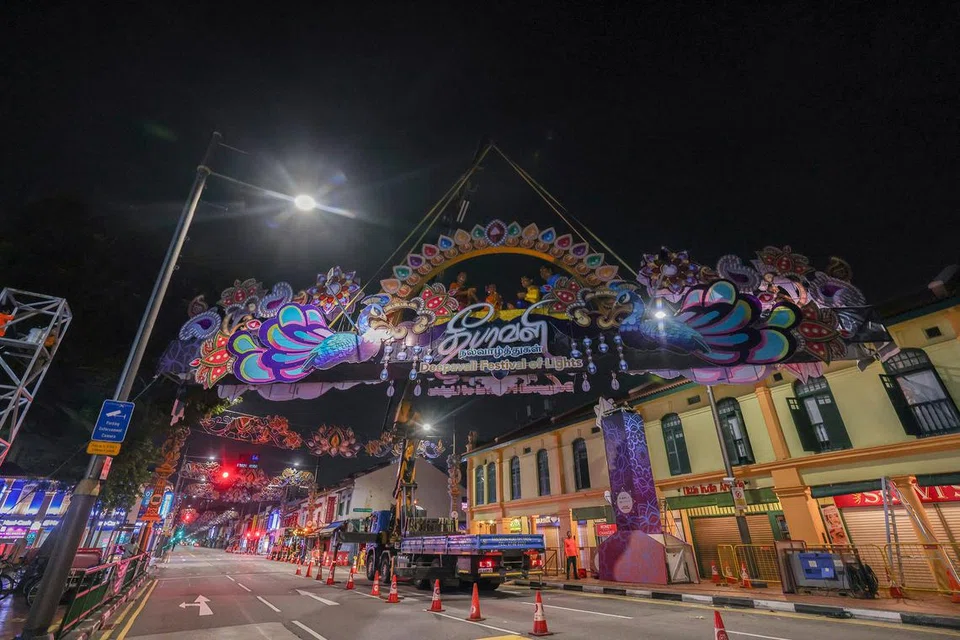Little India was bathed in vibrant colours on the night of Sept 14, as the annual Deepavali light-up gave more than 2km of the district a festive glow.
The light-up, which will illuminate the streets until Nov 17, marks the beginning of celebrations leading up to Deepavali on Oct 31.
The 2024 light-up is themed around family unity, and depicted through a striking three-dimensional installation at the two main arches that welcome visitors to the precinct. The installation features a joyful family of four, symbolising the festival’s focus on togetherness and harmony.
While the kaleidoscope of coloured lights will permeate every street and shop in the Little India district for the next two months, behind-the-scenes of this light-up is a feat not known to many.
The entire installation process took about two months to complete, with crews working tirelessly to ensure everything was ready on time.
This year, the final touches were completed at midnight on the eve of the light-up ceremony. The planning, however, began much earlier – almost immediately after last year’s event.
Over the course of 10 months, a new committee was formed, overseeing every aspect of the celebration, from events and logistics to design and sustainability initiatives.
“We brainstorm ideas that we want to explore and sometimes even get help from schools and students, whose artwork often inspires our themes,” said Mr Regunarth Siva, chairman of the Little India Shop Owners and Heritage Association (LISHA).
“This year, the idea of family unity really struck a chord. A lot of the art we saw from students reflected the importance of spending time with family, and we felt that this was something we wanted to highlight.”
The ongoing roadworks at Race Course Road have limited the extension of the lights for a second consecutive year. Despite this, organisers have made strides in promoting sustainability. This year marks the first time that Light Emitting Diodes (LEDs) are being used throughout the display to save energy.
“We want to promote a sustainable Deepavali,” said Mr Regunarth, who estimated that using LED lights reduced the costs involved by 10-15 per cent.
“The LED lights are just the start. We’re also reducing plastic usage by reusing backdrops from previous celebrations, like Pongal and last year’s Deepavali. It’s important to find more ways to reduce our environmental footprint.”
The installation process itself is meticulous, taking about three weeks to complete. Permits from various government agencies must be secured before work can begin, and everything must be carefully coordinated to ensure that the display is safe.
Madam Chellama, 84, who went around Little India with her daughter-in-law on Sept 14 to “soak in the lights”, said the LED lights were “no less illuminating” than previous years.
“Events like these reflect on the community’s efforts to not just celebrate Deepavali but also to urge youngsters to embrace their heritage and culture,” she said.
“Every year, the light-ups get a bit better, and that should be the way.”
Apart from the light-up, 12 fringe activities have also been organised by Lisha to further enhance the festive atmosphere. Running from Sept 14 to Oct 3, the activities include open-top double-decker bus tours and workshops to engage the public in celebrating the rich cultural heritage behind the festival of lights.
More information on the festivities can be found at www.deepavali.sg



